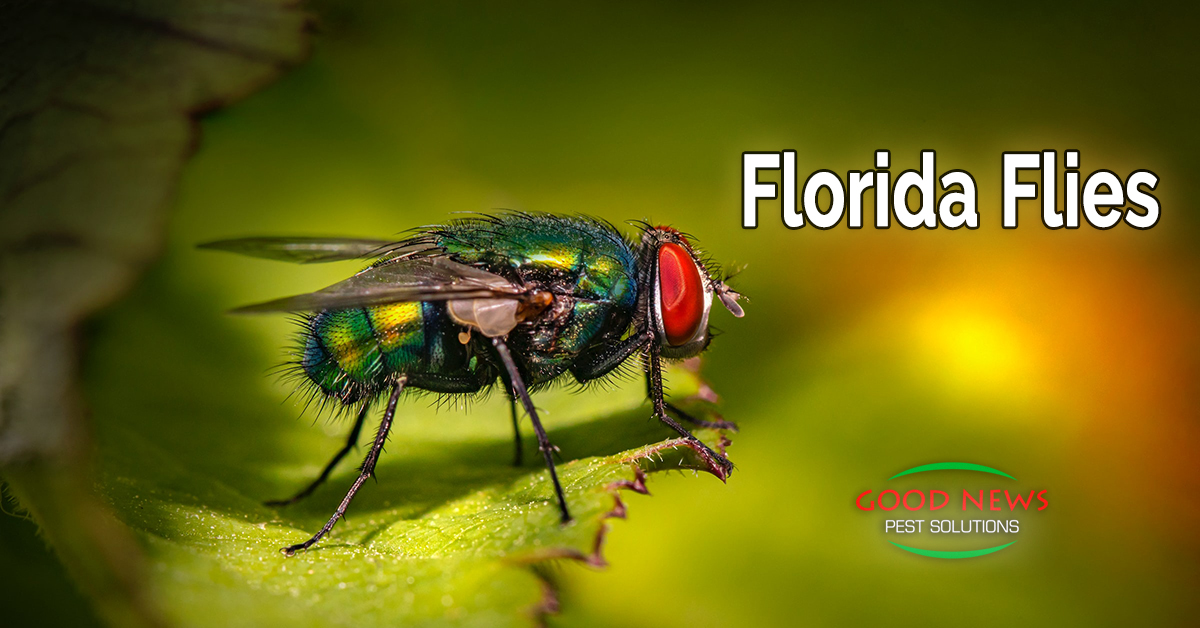
Florida Flies: Part 1
There are more than twenty species of flies scattered across Florida. The majority fall into one of two categories. Next week, we’ll talk about flies that are known for their bite. For today, we’ll cover flies that breed in filth. As you might expect, it gets pretty disgusting under the surface.
Let’s dive in - metaphorically speaking.
As the name suggests, these insects live, breath, and reproduce in the nastiest of places. Anywhere you might find fecal waste, garbage, decaying vegetation, rotting meat, and animal carcasses will be a viable breeding ground for filth breeding flies.
Filth breeding flies ingest only liquids or liquefied flesh with their sponging-lapping mouthparts. They are strong fliers and usually enter homes looking for food or moisture – and then never want to leave. They are significant vectors of diseases from typhoid fever, dysentery and cholera, to poliomyelitis, anthrax, tularemia, leprosy, and tuberculosis. Blame the rats for the Black Plague but it was the flies that brought it there.
There are several species of filth-breeding flies: Black Soldier Flies, Eye Gnats, Grass Flies, Eye Flies, Flesh Flies, Hairy Maggot Blow Flies, Red-Tailed Flesh Flies, Stable Flies and Secondary Screwworms.
Today, we’re going to focus on the two most common varieties found on the Gulf Coast of Florida.
Blow or Bottle Flies
These flies get their name from the metallic blue or green hue on their bodies. Sometimes mistaken for more common houseflies, blow or bottle flies are shinier, often with protruding reddish eyes.
The Calliphoridae lay eggs in rotting grass, animal poop, and poorly maintained compost piles.
They are mostly a disease ridden nuisance but do have occasional uses. Fishermen often will use the maggots for bait. Meanwhile forensic scientists can utilize the presence and quantity of blow flies to help narrow down the time of death at crime scenes.
House Flies
Our second, “star” for this week is the far more common and often even nastier house fly.
Certainly not exclusive to Florida, houseflies are present on every continent except for Antarctica and are usually more active in the summer months. This is true even on the Gulf Coast where our temperatures linger in the 80s for months.
Unlike many of their sister species, Musca domestica almost always lives in close proximity to humans, whether that be in city or rural areas. These flies breed in animal waste, fecal matter, and rotting plants, and take 'disease carrier' to a whole new level. Not only do they spread various harmful toxins just by being around, they also regurgitate and defecate every time they land. Brushing a fly off of your sandwich is already too late. As soon as they light on anything, they vomit and poop – spreading more than 100 different pathogens, including salmonellosis, typhoid, and tuberculosis.
We’re used to house flies because they’re everywhere – but they are more dangerous to our health and wellbeing than almost any other insect we encounter!
Most house flies live 20-30 days. The first hours are spent as eggs in clusters of 75-100 which quickly hatch into maggots or larvae. Within a week to 10 days, the maggots have developed into full grown flies who immediately mate and lay eggs again. A single house fly can produce as many as 200 flies over the course of their lives.
Stopping the Spread
This is why tight mesh screens are recommended and why owners should pick up and discard their dog’s business in plastic trash bags. Those are the best lines of defense against house and blow flies.
Keeping your refuse area clean and maintained also helps. Flies have been known to live for weeks, swarming inside compost, trash, and recycling bins, even if they’re emptied regularly. Using sealed plastic bags also helps minimize the fly population.
And if you’ve got a little bit of a green thumb, try planting basil, marigold, lavender, bay leaves, and catnip. These herbs and flowers repel flies – some of them also limit mosquitoes – and as an added benefit can be used for cooking.
Next week, we’ll chat about biting midges, deer flies, no-see-ums, and other biting flies. Until then, you can start the process to protect your home and family from insect pests with the greenest, safest, most organic insect solutions on the planet. Our Go Green Perimeter Plus is top notch protection against the most common creepy crawlies we run into and it comes at an affordable price. For more details, please give us a call!
« Back to Blog
Proudly Serving
Sun City Center, Ruskin, Palmetto, Parrish, Ellenton, Bradenton, Anna Maria, Holmes Beach, Bradenton Beach, Longboat Key, Lakewood Ranch, University Park, Myakka City, Sarasota, Siesta Key, Osprey, Nokomis, Casey Key, Venice, Englewood, North Port, Port Charlotte, Punta Gorda, Arcadia
Things You Can Do
Pay Your Bill Online
Leave Us a Review
Request a Free* Termite Inspection
Stop Mosquito Bites
Get Rid of Rodents
Get a Termite Damage Warranty
Get Pest Control for Your Attic
Get Pest Control for Your Business Request Prayer
Corporate Address
1080 Enterprise Court, Ste A
North Venice, FL 34275
Call Now: (941) 412-9610
Text: (941) 412-9610
Fax: (941) 412-0080
